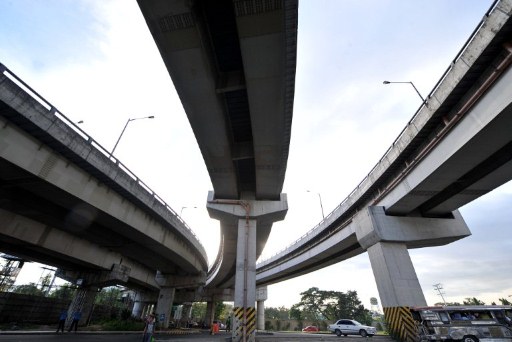Faster growth seen for PH but slow internet a challenge

The South Luzon Expressway Skyway. AFP FILE PHOTO
The Organization for Economic Cooperation and Development (OECD) expects the Philippines to post faster growth in the next five years although the government must address the existing infrastructure gap to fast-track economic development.
For 2017, the OECD projected 6.6-percent gross domestic product (GDP) growth, near the lower end of the government’s 6.5-7.5 percent target range.
“Average growth from 2018 to 2022 is expected to reach 6.4 percent, about 50 basis points higher than [the average of 5.9 percent] from 2011 to 2015,” the OECD said in its report titled “Economic Outlook for Southeast Asia, China and India 2018: Fostering Growth Through Digitalization”, which was launched on the sidelines of the Asean Business and Investment Summit 2017 in Manila.
The OECD’s growth projection for the Philippines for 2018 to 2022, however, was below the 7-8 percent growth target for the period.
“Consumption and fixed investments, which grew 6.1 percent and 11.7 percent on average from 2011 to 2016, respectively, will continue to fuel economic growth until 2022, mainly underpinned by robust remittance inflow from overseas workers, planned big-ticket infrastructure projects and the resilience of offshoring and outsourcing industry,” the OECD said.
However, the OECD pointed to the need to address the country’s underdeveloped infrastructure in order to sustain economic growth.
“While improvements have been made in recent years, additional capital and efficient investments will be needed to keep up with demand for infrastructure development in the fast-growing economy,” the OECD noted.
“The government is looking to attract investors for public-private partnerships (PPPs), but faces challenges such as the absence of a deep long-term fund pool, which means that private project developers bear higher costs of credit. The PPP Center could be strengthened in terms of its mandate and resources,” the OECD said.
To raise more funds for infrastructure, the OECD recommended further development of the bond market as an alternative source of financing, as well as introducing non-traditional tools, including “levies to capture the appreciation in land value resulting from infrastructure development” in order to ramp up revenues.
The OECD also recommended more foreign direct investment (FDI) in information and communications technology (ICT), even as the Philippines’ restrictions on ICT FDIs were “more stringent than those in the economy generally.”
The OECD noted of “relatively high internet prices” in the country.
Also, “slow internet speeds and challenges in online payment affect e-commerce and the digital economy more generally in the Philippines,” the OECD said. /cbb
